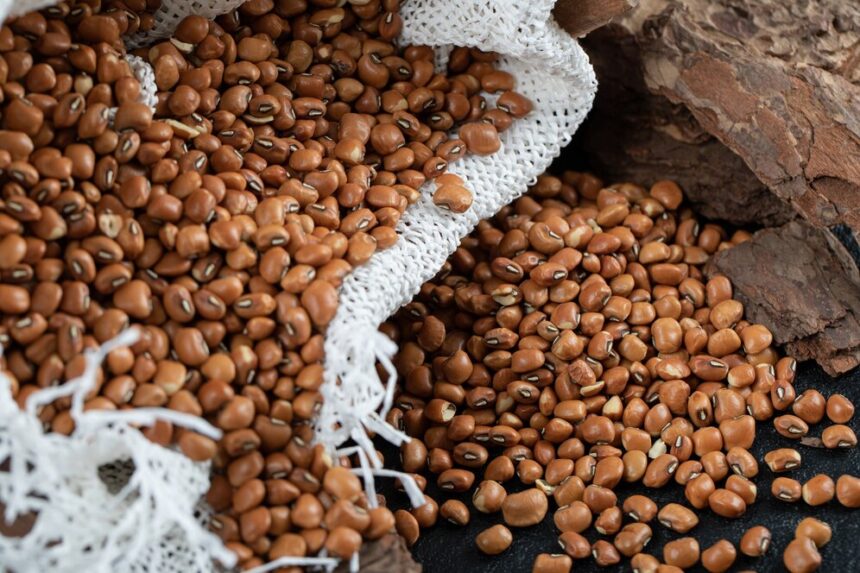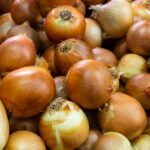Beans are an essential staple food around the world, providing a rich source of protein and other nutrients. However, when improperly stored, beans are vulnerable to pests, particularly weevils. These tiny insects can cause significant damage to stored beans, leading to both quality loss and financial losses for farmers, retailers, and consumers. Weevil infestations can ruin large quantities of stored beans, making effective pest control essential for anyone storing beans for extended periods.
In this article, we’ll explore how to control weevils in stored beans, offering practical, environmentally-friendly solutions to help maintain the quality and shelf life of your beans.
1. Understand the Weevil Problem
Weevils, particularly the bean weevil (Acanthoscelides obtectus) and rice weevil (Sitophilus oryzae), are among the most common pests that infest stored beans. These weevils lay eggs inside the beans, and the larvae hatch and feed on the bean’s contents, eventually causing them to become hollow and unfit for consumption. The damage caused by weevils can reduce the nutritional value of beans and make them unappetizing and unsafe to eat.
2. Prevention: Start with Proper Harvesting and Cleaning
The first step in preventing a weevil infestation is to start with clean, high-quality beans. Weevil problems often begin during the harvesting or packaging process. To prevent future infestations:
- Harvest at the right time: Make sure to harvest beans when they are fully mature and dry. Beans that are harvested too early or are not properly dried are more susceptible to pest infestations.
- Clean the beans thoroughly: After harvest, clean the beans by removing any debris, stones, or damaged beans. This helps reduce the chances of weevils hiding among the beans.
- Inspect for damage: Examine the beans for any signs of insect activity, such as holes or visible weevil larvae. If you find any damaged beans, remove them to reduce the risk of spreading the infestation.
3. Proper Storage Conditions
Proper storage plays a critical role in controlling weevil infestations. By creating the right environment, you can reduce the likelihood of weevils settling in.
- Temperature control: Weevils thrive in warm, humid environments. Store beans in a cool, dry place with low humidity. The ideal storage temperature for beans is between 10°C and 15°C.
- Use airtight containers: Store beans in airtight containers such as plastic bins, glass jars, or vacuum-sealed bags. This minimizes exposure to pests and prevents weevils from entering the storage area.
- Monitor humidity: Use a hygrometer to keep track of the humidity in your storage area. Beans should be kept in an environment with a relative humidity of around 60% or lower.
- Regularly inspect the stored beans: Even with ideal storage conditions, it’s important to check beans periodically for any signs of pests. Remove and discard any infested beans immediately to prevent further contamination.
4. Natural and Chemical Treatments for Weevil Control
If weevils are already present, there are several methods you can use to control the infestation without relying on harmful chemicals.
1. Freezing
Freezing is one of the most effective and chemical-free methods of controlling weevils in stored beans. The cold temperature kills both adult weevils and their larvae.
- How to freeze beans: Place the beans in a freezer-safe bag or container and freeze them for at least 72 hours. Freezing the beans at -18°C or lower will ensure that any pests are killed.
- Advantages: Freezing is an environmentally friendly method, as it doesn’t involve the use of pesticides or harmful chemicals.
2. Heat Treatment
If freezing isn’t an option, applying heat can also help kill weevils. Heat treatment is effective because it raises the temperature inside the beans to a level that is lethal to pests.
- How to heat-treat beans: Place the beans in an oven or heated space and gradually raise the temperature to 60°C–65°C for 30 minutes. Ensure the beans are evenly heated, and allow them to cool before storing them again.
- Advantages: This method is also chemical-free, although it requires careful monitoring to avoid damaging the beans.
3. Diatomaceous Earth (DE)
Diatomaceous earth is a natural powder made from fossilized remains of tiny organisms. It is effective against a wide variety of insects, including weevils.
- How to use DE: Sprinkle a thin layer of food-grade diatomaceous earth over the surface of the beans and mix it in. The sharp particles of DE pierce the outer layers of the weevils, leading to dehydration and death.
- Advantages: Diatomaceous earth is non-toxic to humans and pets, making it a safe option for organic farming and storage.
4. Chemical Treatments
In some cases, a mild pesticide may be necessary, especially for large-scale operations. However, chemical treatments should be used sparingly and only when other methods have failed.
- Pesticides: There are various insecticides available for treating stored beans. When using pesticides, always follow the manufacturer’s instructions carefully to avoid contamination and ensure safety.
- Fumigation: For large-scale storage or serious infestations, fumigation is an option. Professional pest control companies often use phosphine gas to treat stored grains and beans. However, this method should be handled with extreme caution and by licensed professionals.
5. Maintain Cleanliness and Regular Monitoring
Even after implementing pest control measures, maintaining cleanliness and monitoring your beans regularly are key steps in preventing future infestations.
- Regularly clean storage areas: Sweep or vacuum the storage areas to remove any spilled beans, dust, or pest residues.
- Keep records: Maintain a log of your pest control efforts, storage conditions, and inspection schedules to ensure that you stay on top of potential infestations.
Weevils in stored beans are a common problem, but with the right precautions and treatments, you can protect your beans from damage and ensure a long shelf life. By harvesting and cleaning beans properly, storing them in optimal conditions, and applying natural or chemical treatments when necessary, you can prevent weevil infestations and preserve the quality of your beans for months.
By following these guidelines, whether you’re storing beans for personal use or managing large-scale storage, you can reduce waste, save money, and ensure the beans remain nutritious and safe to consume.







